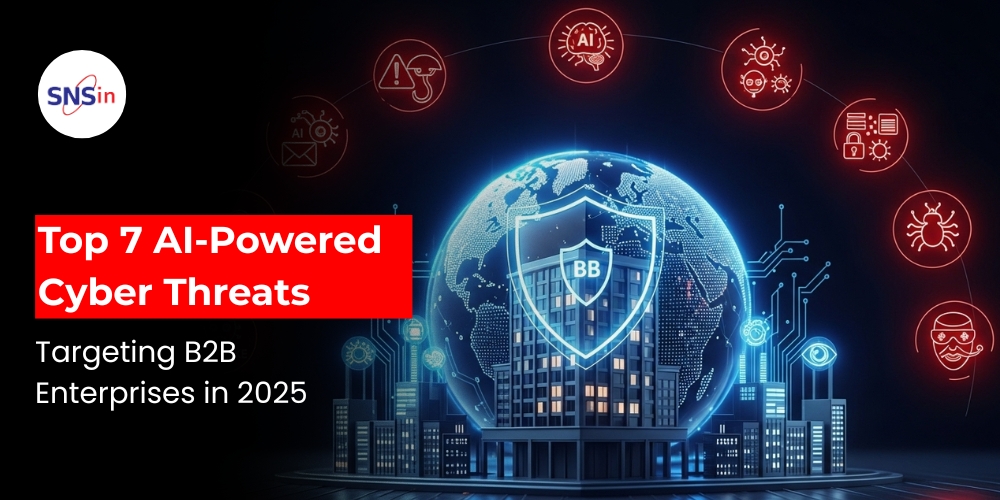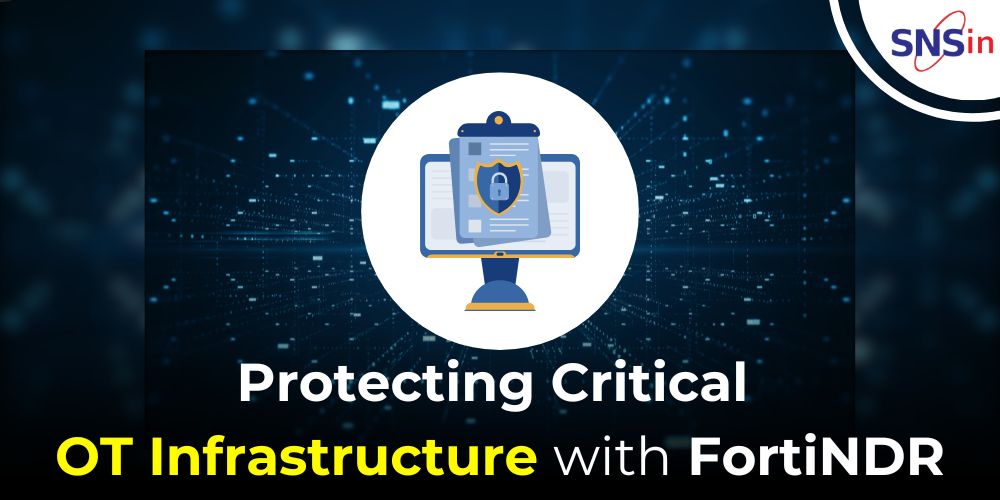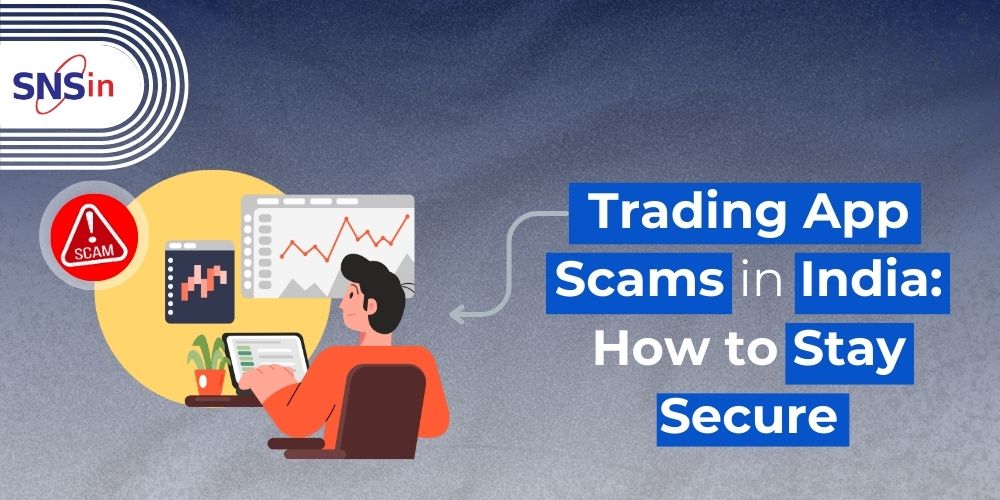Imagine this.
It’s a regular Thursday. Your sales manager is wrapping up calls, eyeing the clock, maybe even daydreaming about the weekend. Suddenly, a voice message pops up. It’s you. Well, it sounds like you. Calm, clear, a little urgent: “Hey, I need you to process that vendor payment right away. Same account as last time.”
She replies, “Got it, boss.”
Only problem?
You never sent that message.
That voice wasn’t yours.
But the AI thought it was.
Welcome to cybersecurity in 2025, where artificial intelligence is no longer just your helpful assistant answering FAQs or writing sales emails. It’s now wearing a mask, blending in, and sometimes doing the cyber equivalent of pickpocketing your business in broad daylight.
AI is fast. It’s smart. And it’s now being trained to trick, mimic, and exploit. It can forge your voice, write perfect phishing emails, build stealthy malware, and slip past security systems with all the grace of a seasoned con artist.
For B2B companies where trust, data privacy, and uninterrupted operations aren’t just goals but lifelines, this isn’t a distant sci-fi plot. It’s the new front line.
So, what kind of threats are we really facing? And what should smart businesses be watching out for?
Here’s your 2025 cheat sheet. Seven AI-powered cyber threats every B2B leader needs to know before they knock on your digital door.
1. Deepfake Impersonations:
Remember when phishing emails were easy to spot? Typos, weird links, and cartoonish threats about frozen bank accounts? Not anymore.
In 2025, deepfake tech is good. Scary good. With just a few minutes of public video or audio a panel discussion, a YouTube interview, or a LinkedIn Live, AI can recreate your voice and even your face to deliver convincing video messages.
Use case in attacks:
- A CFO receives a WhatsApp video from the “CEO” authorizing a fund transfer
- A supplier receives an audio message to alter invoice details
- Internal comms are spoofed using voice clones to leak IP
2. AI-Generated Phishing Campaigns:
Gone are the days when phishing emails were easy to spot, full of broken English, shady links, and threats from a fake “Prince of Nigeria.”
In 2025, phishing has had a glow-up. Thanks to AI, today’s scam emails are crisp, convincing, and creepily personal.
They pull info from your company’s org chart, old blog posts, press coverage, and even that team photo you posted on LinkedIn last week. The result? Messages that look like they’re from your boss, your finance head, or that vendor you’ve worked with for years.
And it’s not just emails anymore. SMS, Slack, and Zoom chats are all fair game.
Why it works:
- AI tools analyze your industry lingo and tone
- They tailor messages to match regional dialects and cultural cues
- They hit emotional triggers: urgency, authority, and FOMO
According to the IBM X-Force Threat Intelligence Index 2024, 73% of targeted phishing attacks now show signs of AI-assisted content.
3. Automated Vulnerability Scanning Bots:
Think of these as cybercriminal Roombas, except instead of cleaning floors, they’re sweeping the internet for exposed databases, unpatched software, misconfigured APIs, and forgotten login portals.
In the past, hackers had to search manually or run basic scripts. Now, AI bots autonomously scan, prioritize, and attack weaknesses at scale all in real time.
Target points:
- SaaS tools with weak admin controls
- Exposed test environments
- Open ports on cloud servers
These bots often deliver their findings to human operators, who launch the actual exploit. It’s a high-speed assembly line of cyberattacks.
4. Synthetic Identity Fraud:
What happens when AI starts creating people who don’t exist? You get synthetic identities, realistic-looking profiles, complete with work history, photos, and social media.
Why it matters for B2B:
- Fake vendors infiltrate supply chains
- Fraudulent accounts apply for loans or insurance
- Imposters gain access to internal tools via onboarding pipelines
According to Javelin Strategy & Research, synthetic identity fraud is expected to cost businesses over $5 billion in 2025, largely due to AI making these identities nearly undetectable.
5. Polymorphic Malware:
Here’s where it gets sci-fi. Traditional malware has a fingerprint; it behaves in a predictable way. AI-powered polymorphic malware, however, rewrites its own code as it spreads. That means it can morph to avoid detection by antivirus tools.
Think of it like a digital shapeshifter, one that learns your network’s behavior and blends in.
Scenarios where it thrives:
- During software updates and patches
- Embedded in legitimate-looking apps
- As part of ransomware payloads
It doesn’t just knock down the door. It walks in, smiles, and says, “I work here.”
6. AI-for-Hire on the Dark Web:
Not every attacker is a coding genius. In 2025, you don’t need to be. Just log into certain marketplaces on the dark web and rent an AI-powered attack platform.
What’s offered:
- Phishing-as-a-Service (complete with real-time spellcheck and personalization)
- Deepfake voice generators trained on your leadership team
- Chatbots to scam your support team into revealing credentials
Cybercrime is being democratized, and it’s becoming disturbingly affordable. Some AI attack kits start at just ₹2,000 per week. Yes, cheaper than your weekend pizza delivery.
7. AI-Enhanced Insider Threats:
Here’s the twist: Sometimes the threat isn’t outside; it’s already inside your business.
Insider threats (disgruntled employees, negligent contractors) aren’t new. But now, AI helps them be more effective and less detectable. They can use AI to:
- Generate malware without coding knowledge
- Obfuscate data exfiltration patterns
- Manipulate audit logs to cover their tracks
With remote work and BYOD (Bring Your Own Device) still dominant, endpoint monitoring alone is no longer enough.
So what should B2B companies do?
AI may be the new weapon in the attacker’s arsenal, but it’s also your best defense if used wisely. Here’s how to fight fire with fire:
1. Deploy AI-Powered Defenses: Invest in security tools that rely on behavior analytics, not just signatures. If your HR assistant suddenly starts accessing server logs or downloading engineering schematics, the system should notice. And alert you. Fast.
2. Layer Your Authentication: Strong passwords are like decent locks; they help, but they won’t stop a clever thief. In 2025, every login should feel like entering a high-security vault. Start with Multi-Factor Authentication (MFA); no one gets in with just a password anymore.
Then level it up:
- Use biometrics like fingerprints or facial recognition.
- Add contextual access rules so your system asks, “Wait, why is this person logging in from a café in another country using a browser they’ve never used before?”
3. Harden Your Endpoint Security: Laptops, mobiles, tablets, and even that old desktop in the storeroom. They’re all potential entry points. Use modern Endpoint Detection and Response (EDR) solutions that don’t just react; they predict and prevent, using AI to detect subtle signs of compromise.
4. Educate Your Teams (Continuously): Run simulations. Share red flag examples. Make deepfake detection part of your security awareness training.
5. Reassess Vendor Access: Third-party apps and integrations are a risk vector. Apply Zero Trust principles to partners and vendors too, not just internal users.
Final Thoughts: Intelligence ≠ Immunity:
AI isn’t evil. It’s a mirror. And in the wrong hands, it reflects back the vulnerabilities we’ve ignored for too long.
In 2025, it’s no longer about if AI will be used against your business. It’s about how prepared you are when it happens.
The good news? You don’t have to face it alone.
At SNS India, we help B2B enterprises build resilient, AI-aware cybersecurity strategies that don’t just defend; they adapt, learn, and evolve. Because the only thing more powerful than AI in the wrong hands is AI in the right ones.
For more information on cyber securing your company the right way, send out an email to [email protected].
Ready to outsmart tomorrow’s threats today?
Let’s talk. Let’s protect what matters.
Author
NK Mehta
![]()




